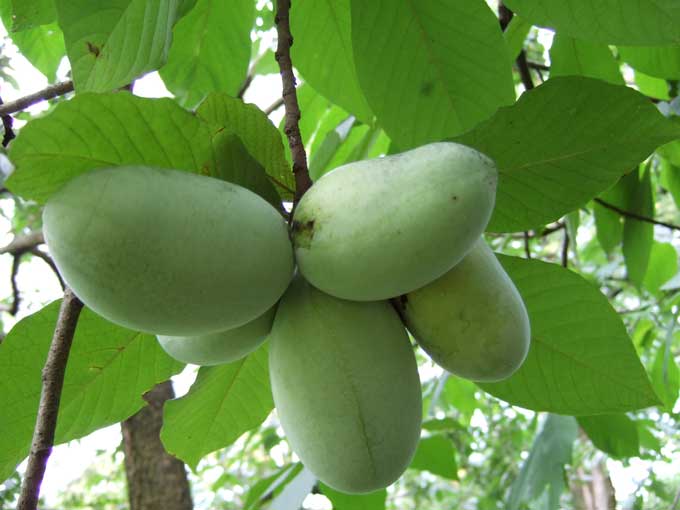 In the book I'm reading that I mentioned back in Post No. 324 on Berea College, I read the following sentence today:
In the book I'm reading that I mentioned back in Post No. 324 on Berea College, I read the following sentence today:When they got to the spot she had in mind, Harris helped her get settled, seated on the ground, her balsam pillow at her back, leaning on the trunk of a paw-paw tree on the riverbank.The word paw-paw tree was mentioned earlier in the book, but I didn't take the time to learn about it then.
Today I learned that the paw-paw tree is a type of slender tree native to North America with large leaves and fruit. The fruit is a large edible berry with numerous seeds. It is green when unripe, maturing to yellow or brown. It has a flavor somewhat similar to both banana and mango, varying significantly by cultivar, and has more protein than most fruits. Although it is a supposedly tasty and nutritious fruit, it has never been cultivated on the scale of apples and peaches because of freezing and shipping problems.
In recent years the paw-paw has attracted renewed interest, particularly among organic growers, as a native fruit which has few to no pests, and which therefore requires no pesticide use for cultivation. The shipping and storage problem has largely been addressed by freezing. Among backyard gardeners it also is gaining in popularity because of the appeal of fresh fruit and because it is relatively low maintenance once planted. The pulp is used primarily in baked dessert recipes and for juicing fresh paw-paw drink. In many recipes calling for bananas, paw-paw can be used with volumetric equivalency.
No comments:
Post a Comment